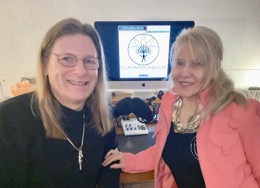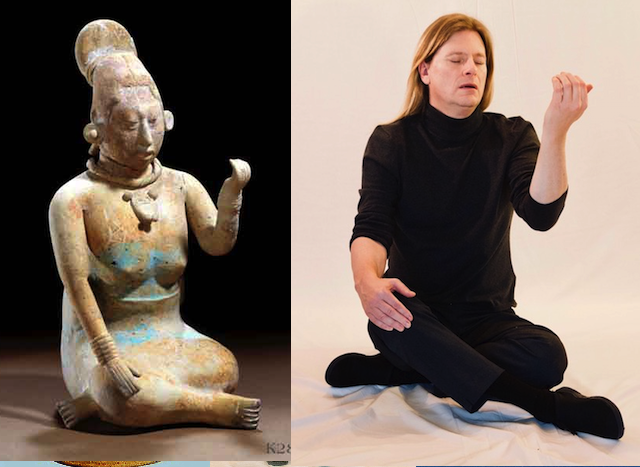ABOUT OUR SUNDAY DISCUSSIONS
Q&A / SPECIAL GUESTS

- Trance states are a normal and natural functioning. We all know that magical place where some other aspect of ourselves takes over, and becomes something beyond yourself. So did the ancients, and they created a formula to access that more readily. We call this akin to a ‘waking dream.’ If you can daydream, you can do this.
- No drugs or plant medicine necessary, though some cultures use(d) them. The fact that we have spontaneous mystical experiences, and the deep reverie of daydreams, demonstrates how readily we slip into these states.
- Ecstatic trance is but one of the many types of trance, one celebrated by all religions and cultures, on all continents through the ages. Known by many names, the academic term “ecstatic” derives from the Greek “ekstatikos” = “ex” (outside) + “stasis” (normal or steady state) to mean the sense of momentarily stepping outside our ordinary state of mind.
- It’s universal, we can all do this. Mystical moments are not for mystics only.
- Goodman was among the first to deduce, in the 1960’s and 1970’s, from her fieldwork and research, that altered states of consciousness are based on a physiological shift and not a particular culture or belief system. There’s no dogma or -isms here. No drugs or plant medicine.
- The postures piece of “Ecstatic Trance Postures” is another unique contribution of Dr. Goodman. She decoded simple sitting and standing postures depicted in select ancient artwork from around the world as “ritual instructions” and added this to the universal ‘calling the spirits’ ritual practiced widely throughout the eons. These postures seems to deepen and focus the the trance experience, akin to bending the antennae to tune into specific frequencies.
- The power and role of ritual. Many types of ritual for various purposes. Ours is to call in the spirits, that other realm, to engage with us for a short while. This ritual is age-old and used worldwide. There are no drugs, no plant medicine, no outside agents. It’s body wisdom, the body reading the cues in the ritual and responding by moving into shifting easily and naturally into this state.
- Lab tests from the Universities of Munich and Vienna, in the 1980’s revealed some small part of this physiological shift. in the lab, this capacity to make this shift. Pulse rate increases, yet blood pressure drops (within safe limits). Huge surge of the beta-endorphins the well being hormones, while stress hormones decrease. EEG shows we remain in beta, our everyday brain wave, while adding theta, the mystical side of the dream state.
- Stories about a few of the more interesting artifacts and postures and experiences
- The altered state experience of ecstatic trance spirit journeys: indicators of being deep in trance, typical experiences, the visionary, energy body, and emotional aspects, why geometric symbols are seen as their relation to cave art,
ABOUT LAURA LEE & PAUL
DIRECTORS OF CI

As Directors of the Cuyamungue Institute (CI), Laura Lee and Paul write books, articles, newsletters, and present this work. Venues have included interviews and lectures for the general public and for university classrooms, on-site workshops around the world, a collaborative modern art exhibition showcasing CI at the Palais de Tokyo in Paris, and Zoom webinars. They studied with Dr. Goodman for ten years before her passing in 2005, have taught since 2000, and have guided and administered CI since 2011 with expertise born of media careers. Laura Lee hosted “The Laura Lee Show” on nationally syndicated radio while Paul ran a media company, producing and publishing books and videos.
Mission of Cuyamungue Institute (CI): Anthropologist Dr. Felicitas Goodman founded CI in 1978 as the world-wide headquarters to carry forward her life’s work, as a research organization registered as a non-profit 501(c)3 in Santa Fe, New Mexico.
ABOUT CUYAMUNGUE INSTITUTE
ECSTATIC TRANCE POSTURES


